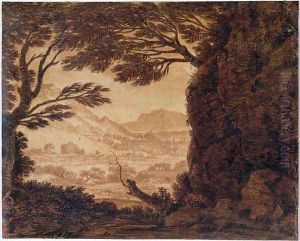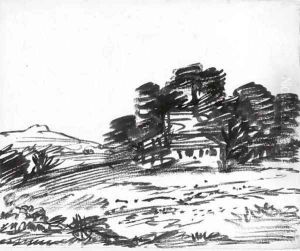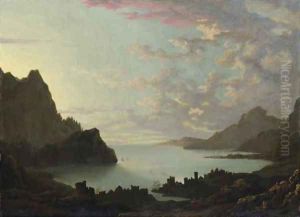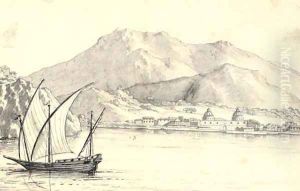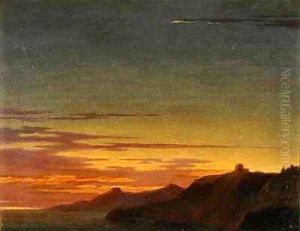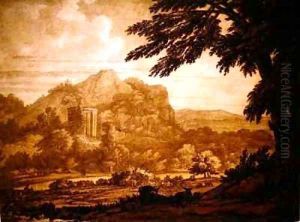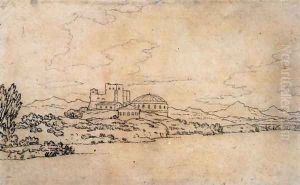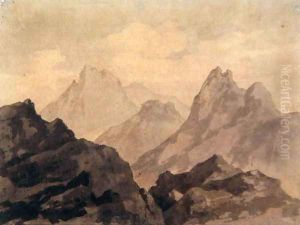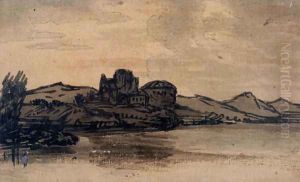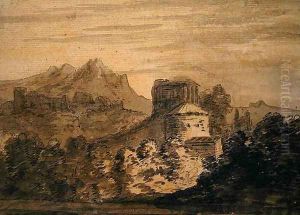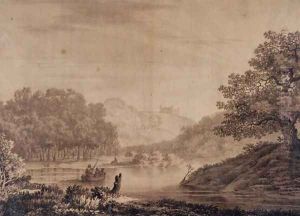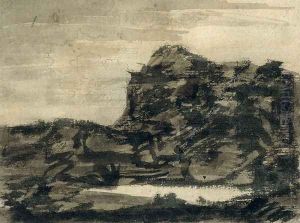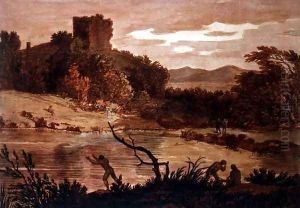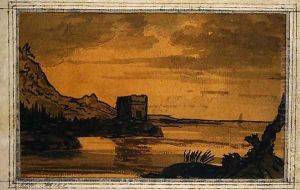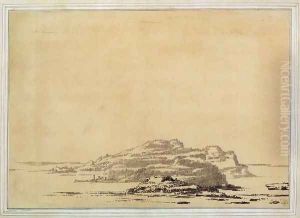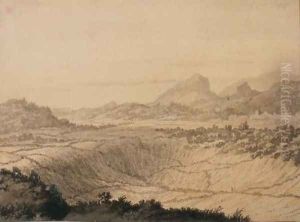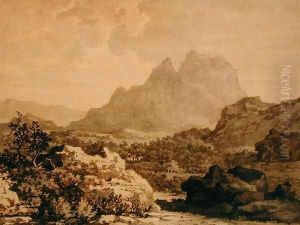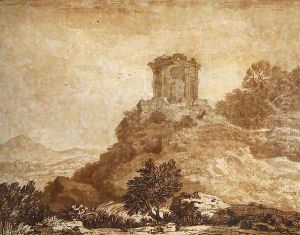Alexander Cozens Paintings
Alexander Cozens was a British landscape painter in watercolours of Russian origin. He was born in 1717 in Saint Petersburg, Russia, to the English shipbuilder Richard Cozens. Cozens is known to have come to England as a young man and studied at the Godfrey Kneller Academy of Painting and Drawing in Great Queen Street, London, around 1733.
Cozens is widely regarded as a seminal figure in British landscape painting, often credited with pioneering a method of landscape painting that used the accidental blot, a technique that involved smudging ink on paper and then developing the blot into a landscape composition. This method was a precursor to the inkblot techniques later used in psychological testing, but in Cozens's case, it was employed to stimulate the artist's imagination and help him break free from the pictorial conventions of the time. His approach was innovative and experimental, emphasizing the role of imagination in the creation of art.
Throughout his career, Cozens worked as a drawing master and had several notable students, including John Constable, who would later become one of the foremost British landscape artists. Cozens's work, particularly his theoretical approaches to landscape painting, had a significant influence on the Romantic movement in art, which valued emotion and imagination over classical ideals.
Cozens published several influential treatises on landscape painting, including 'A New Method of Assisting the Invention in Drawing Original Compositions of Landscape' in 1785. He also produced a collection of 'Various Species of Composition' which were essentially printed outlines of landscape scenes intended to be filled in by amateur artists.
Although Cozens did not enjoy widespread fame during his lifetime, his contributions to the landscape genre were later recognized for their originality and influence on subsequent generations of artists. Alexander Cozens died in London in 1786, leaving behind a legacy as a pivotal figure in the development of British landscape painting.
